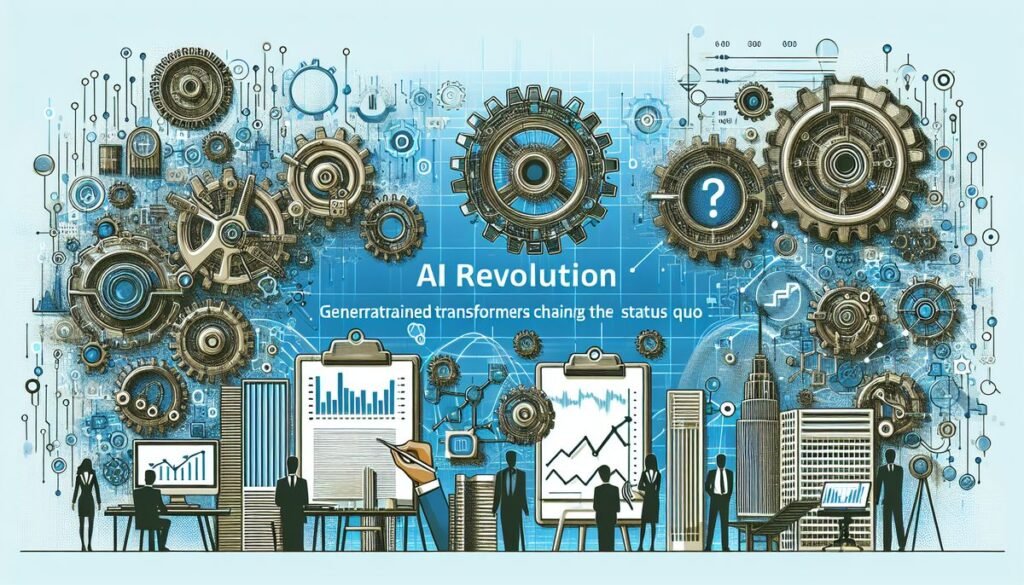In today’s digital era, a professional logo is more than just a symbol for a company; it’s an essential component of a brand’s online presence and identity. A well-crafted logo can make a significant impact on how potential customers perceive a business. This article, ‘Create Logo Magic: Why a Professional Logo Boosts Your Online Presence,’ delves into the reasons why investing in a professional logo design is crucial for anyone looking to establish a strong and memorable online presence.
Key Takeaways
- A professional logo serves as a cornerstone of brand identity, enhancing recognition and making a powerful first impression.
- Investing in a high-quality logo design brings long-term benefits, including establishing trust and conveying professionalism.
- A striking logo can significantly increase a brand’s digital visibility and is integral to a cohesive online marketing strategy.
- Navigating the logo design process involves choosing the right designer and understanding the key elements that make a logo effective.
- Future logo design trends will likely focus on technological advancements and evolving consumer preferences, emphasizing the need for brands to adapt.
The Power of First Impressions: Crafting a Logo That Speaks Volumes
Understanding the Impact of Visual Identity
In the digital realm, a company’s visual identity is the cornerstone of its brand presence. A logo is the spearhead of this identity, encapsulating the essence of a brand in a single, memorable image. It’s not just about looking good; it’s about being instantly recognizable, conveying the brand’s personality, and differentiating it from competitors.
Effective logos are more than just visually appealing; they are versatile and adaptable across various platforms. Here’s why versatility is key:
- Visibility: Logos appear on everything from tiny mobile screens to large billboards.
- Consistency: Maintaining a consistent look across all mediums reinforces brand recognition.
- Adaptability: As design trends change, a versatile logo can evolve without losing its core identity.
Investing in a professional logo design is not merely an aesthetic choice; it’s a strategic business decision. A well-crafted logo can elevate a brand’s online presence, making it more approachable and trustworthy to potential customers.
With the advent of AI-powered tools like LogoAI and DIDIMO, the process of creating a logo has become more efficient and creative. These innovations are revolutionizing brand identity and 3D design, enhancing creativity and efficiency in various industries.
The Role of a Logo in Brand Recognition
A logo serves as the cornerstone of a brand’s visual identity, often being the first element that potential customers encounter. It is the spearhead of your brand image, a beacon that guides consumer recognition and loyalty. A well-crafted logo not only distinguishes a business from its competitors but also fosters a connection with the audience, encapsulating the brand’s values and personality in a single, memorable design.
- Brand Identification: A logo is a visual symbol that represents your business and is crucial for standing out in the consumer’s mind.
- First Impression: The creative design of a logo can positively influence the first impression of potential customers.
- Memorability: A distinctive logo design aids in brand recall, which is vital when consumers make purchasing decisions.
- Differentiation: A unique logo sets your business apart in a crowded marketplace, allowing for easier brand recognition.
Investing in a creative and professionally designed logo is an integral part of establishing a successful brand identity. It’s not just about aesthetics; it’s about creating a visual representation that resonates with consumers and remains etched in their memory. This investment is a testament to the importance of a logo in building and promoting your brand.
Creating a Memorable Logo: Key Elements to Consider
A logo is much more than just an image; it is a point of recognition for clients and an important foundation for the branding of your company. A memorable logo can significantly influence brand perception and consumer behavior. To create a logo that stands out, consider these key elements:
- Simplicity: A simple design ensures your logo is easily recognizable and memorable. Complex designs can be confusing and forgettable.
- Versatility: Your logo should be functional across various mediums and applications, from business cards to billboards.
- Color: Colors play a crucial role in how your logo is perceived. They can evoke different emotions and should align with your brand’s message.
- Typography: The choice of font can convey the personality of your brand, whether it’s professional, friendly, or innovative.
- Uniqueness: Your logo should be distinctive and set you apart from competitors. Avoid generic designs that can be easily replicated.
Investing time in crafting a logo that encapsulates these elements is not just about aesthetics; it’s about creating a visual anchor for your brand that resonates with your audience and remains etched in their memories.
Remember, the goal is to create a logo that can be easily recalled even in the sea of countless brands. It’s not just about making a statement; it’s about making a lasting impression.
Professional Logo Design: More Than Just Aesthetics
The Importance of Professionalism in Logo Creation
When it comes to establishing a brand, the logo is the cornerstone of visual identity. A professional logo design is not just about creating a visually appealing symbol; it’s about crafting an emblem that embodies the essence of the brand and communicates its values to the audience. Investing in a professional logo design shows that you take your brand seriously and are committed to making a mark in your industry.
Professionalism in logo creation is not just about the end product; it’s about the process. A professional designer brings a level of creativity, attention to detail, and aesthetic sensibility that elevates a logo from good to great. They understand the significance of a logo in creating a cohesive brand image and ensure that it is versatile enough to be used across various platforms.
A professional logo design contributes to the growth of a community and non-profit startup in many ways. The logo becomes a core visual identity of such organizations, encapsulating their mission and values.
Here are some key reasons why professionalism is crucial in logo design:
- Professional designers are trained to deliver high-quality results.
- A refined aesthetic and attention to detail ensure a polished and impressive final product.
- The logo serves as a central element in your brand’s visual identity.
- Consistency across branding is essential for creating a unified brand image.
Remember, a logo is more than just a graphic; it’s a strategic tool that can enhance your brand’s recognition and influence consumer perception.
Consistency Across Branding: The Logo as a Keystone
A logo is more than just a graphic mark; it is the cornerstone of a brand’s visual identity. Consistency in logo design across various platforms and marketing materials is crucial for building a cohesive and unified brand image. This uniformity not only enhances brand recognition but also fosters trust and credibility with customers.
Reflect on the brand’s personality: Ensure the logo communicates the brand’s personality and values. Whether it’s modern and innovative or traditional and reliable, the logo should mirror these attributes.
Consider cultural sensitivity: Be mindful of cultural nuances and symbolism that might resonate differently across audiences. Colors, symbols, and imagery can carry specific meanings, so it is important to choose elements that positively align with the target audience.
Investing in a professional logo design ensures that your brand’s keystone is crafted with precision and care, reflecting the essence of your business and resonating with your audience.
Investing in Quality: The Long-term Benefits of a Professional Logo
Investing in a professional logo goes beyond the initial creation; it’s about building a long-term asset for your brand. A professional logo can significantly enhance your brand’s credibility and overall business success. It’s not just a one-time expense but a contribution to your brand’s identity and reputation that grows with your business.
A well-designed logo can lead to increased brand recognition, customer loyalty, and potentially higher sales, making the initial investment worthwhile.
Consider the return on investment (ROI) when choosing your logo. A professional logo is a visual representation of your business’s values and offerings, playing a crucial role in how consumers perceive and connect with your brand. Here are some key benefits of investing in a professional logo:
- Enhanced brand credibility
- Attraction of a loyal customer base
- Differentiation from competitors
- Improved customer perception and brand trust
Remember, quality matters. A logo is often the first thing customers see, so investing in a well-designed logo, even at a slightly higher price point, can lead to better customer perception and brand trust. Examine what each pricing tier includes, such as multiple design options, revisions, and different file formats, to ensure you’re getting the package that aligns with your needs.
Maximizing Online Presence with a Striking Logo
Enhancing Digital Visibility Through Logo Design
In the digital realm, a logo is more than just a symbol; it’s the cornerstone of your brand’s visual identity. A well-designed logo can significantly enhance your digital visibility, making your brand instantly recognizable across various online platforms. Effective logos must be visually appealing and easily recognizable, especially in today’s digital age where they are displayed on screens of different sizes.
AI tools revolutionize content creation, customer service, and marketing. Harnessing AI for dynamic content creation and automated social media workflows can elevate your brand image, ensuring that your logo remains at the forefront of your digital strategy.
Consistency in logo design is crucial for building a cohesive brand image. A logo that adapts well to different mediums and evolves with design trends without losing its core identity is a beacon of your company, spearheading your online presence.
Creating a logo that stands out in the sea of digital noise is not just a luxury but an imperative necessity. It’s essential to keep up with design trends, such as color grading, to adapt logos and stay current without a complete redesign. Remember, consumers tend to remember memorable visuals more than names or words.
Leveraging Logos for Social Media Impact
In the realm of social media, a logo is not just a symbol; it’s a crucial tool for building a digital handshake with your audience. A professional logo is essential for online brand image, providing professionalism, consistency, recognition, competition edge, and credibility, enhancing customer trust and loyalty. It’s the cornerstone that can make your brand instantly recognizable across various platforms.
To effectively leverage your logo on social media, consider the following points:
- Keep It Simple: A simple logo is more likely to be remembered and recognized.
- Think Versatility: Your logo should be adaptable to different social media formats and sizes.
- Color Considerations: The right color scheme can convey your brand’s personality and evoke the desired emotions.
By integrating your logo strategically across social media profiles and posts, you can create a cohesive brand narrative that resonates with your audience and stands out in a crowded digital landscape.
Integrating Your Logo into Your Online Marketing Strategy
In the digital realm, your logo is the cornerstone of your brand’s visual identity. Integrating your logo into your online marketing strategy is crucial for maintaining consistency and leveraging brand recognition. Simple and effective logo integration can amplify your marketing efforts and ensure a cohesive brand experience across all digital touchpoints.
- Emails and Invoices: Include your logo to reinforce brand identity.
- Social Media: Use your logo consistently across profiles and posts.
- Marketing Materials: Ensure your logo is present on all promotional content.
Remember, a logo is more than just a graphic; it’s a representation of your business’s values and offerings. Investing in a creative and professionally designed logo is integral to establishing a successful brand identity. As Shopify suggests in their guide, avoid overwhelming logos with too much color and tiny details that can ruin a first impression.
Outstanding branding serves as the foundation of all your marketing efforts. Whether engaging in SEO, social media marketing, or email campaigns, a strong brand identity ensures that all materials are coherent and aligned with your overall brand image.
Navigating the Logo Design Process: Tips and Strategies
Choosing the Right Designer: DIY vs. Professional Services
When it comes to creating a logo, the decision between a DIY approach and hiring a professional designer is pivotal. Your logo is the cornerstone of your brand identity, and choosing the right path for its creation can make all the difference. Here are some factors to consider:
-
Budget: DIY may seem cost-effective, but remember to account for the cost of tools and the risk of mistakes that could incur additional expenses. Professional designers, while initially more expensive, can provide cost savings in the long run by avoiding costly errors.
-
Quality and Results: The outcome of a DIY logo heavily relies on your own skills and knowledge, which can be limiting. A professional brings specialized skills and experience, often resulting in a higher quality logo that aligns with your brand’s vision.
-
Time and Commitment: Consider the time you can realistically dedicate to a DIY project. Professional designers can efficiently manage the project, allowing you to focus on other business priorities.
-
Long-term Impact: A DIY logo might require frequent updates or redesigns. Professionals design with longevity in mind, creating logos that endure and remain effective over time.
Choosing between DIY and professional logo design services isn’t just about the immediate cost or outcome. It’s about investing in your brand’s future and ensuring that your logo can stand the test of time and evolve with your business.
Key Strategies for Effective Logo Design
When embarking on the journey of logo design, it’s crucial to understand the brand and its audience. A deep dive into the brand’s ethos, values, and the demographic it aims to attract is the foundation of a logo that truly resonates. Simplicity, often, is the soul of a memorable logo. A clean, straightforward design ensures easy recognition and recall, making it a staple in the minds of consumers.
Versatility is another cornerstone of effective logo design. Your logo should maintain its integrity across various platforms and sizes, from the tiny icons on a smartphone to the expansive banners at trade shows. Color considerations play a pivotal role as well; the right palette can evoke the desired emotions and reinforce brand identity.
Investing in a professional logo is not just about the present—it’s a strategic move for the future. A well-crafted logo adapts over time, maintaining relevance in an ever-evolving market.
To avoid common pitfalls, it’s essential to steer clear of trends that quickly become dated and to ensure that the logo is scalable and legible in all formats. Here’s a quick checklist to keep in mind:
- Deep understanding of the brand
- Simplicity in design
- Versatility across mediums
- Appropriate color scheme
- Timelessness over trendiness
- Scalability and legibility
By adhering to these principles, you set the stage for a logo that not only stands out but also stands the test of time.
Common Pitfalls to Avoid in Logo Development
When embarking on the journey of logo development, it’s crucial to steer clear of common pitfalls that can undermine the effectiveness of your design. Avoiding complexity is key; a simple logo is not only more memorable but also more versatile across various platforms. Here are some pitfalls to watch out for:
- Overcomplicating the design with too many elements
- Neglecting the importance of scalability; your logo should be recognizable at any size
- Choosing colors without considering the psychological impact they may have
- Using trendy fonts that may date your logo quickly
- Forgetting to test your logo with your target audience
Remember, the goal is to create a logo that is both distinctive and reflective of your brand’s identity. It should resonate with your audience and stand the test of time.
In addition to these points, it’s essential to ensure that your logo is unique. Falling into the trap of clichés or mimicking competitors can dilute your brand’s uniqueness. Always aim for a design that sets you apart and speaks directly to your audience. Lastly, don’t overlook the power of feedback. Before finalizing your logo, seek opinions from various stakeholders to ensure it hits the mark.
The Future of Logo Design: Trends and Predictions
Emerging Trends in Logo Design and Branding
As the digital landscape evolves, so does the art of logo design. Keeping a brand’s logo up-to-date with current design standards is crucial for maintaining professionalism and relevance. Among the emerging trends, we see a shift towards simplification and minimalism, where logos are stripped down to their essential elements, making them more adaptable and memorable.
- Hand-Drawn Elements: Adding a personal touch with custom illustrations or typography.
- Responsive Logos: Adapting to various digital platforms and screen sizes.
- Custom Typography: Unique, handcrafted fonts that stand out.
- Muted and Earthy Colors: A trend towards subdued color palettes.
- Geometric Shapes: Incorporating clean, minimalist shapes into designs.
Investing in these trends not only enhances a logo’s visual appeal but also ensures that it resonates with contemporary consumer preferences. A logo that can adapt and grow with the times is a logo that will stand the test of time.
It’s essential to integrate these trends thoughtfully, ensuring that a logo remains true to the brand’s identity while staying fresh and engaging. The key is to balance modernity with timelessness, creating a logo that can evolve without losing its core essence.
Adapting to Technological Advances in Logo Creation
The evolution of technology has brought about significant changes in the way logos are created. The upcoming GPT 4 Logo promises to offer more advanced designs, expanding on the AI’s capabilities in the realm of design. The adaptability and versatility of logo creation tools have become crucial in today’s digital landscape.
The GPT Logo Creator’s ability to adapt and incorporate versatility is perfectly captured in the intricately designed Chat GPT logo PNG.
To demonstrate the efficiency of the GPT Logo Creator, let’s consider a table comparing it with traditional logo generation tools:
| Feature | GPT Logo Creator | Traditional Tools |
|---|---|---|
| Uniqueness | High | Moderate to Low |
| Design Sophistication | High | Varies |
| Adaptability | High | Moderate |
This table highlights the superiority of AI-driven tools in terms of uniqueness, design sophistication, and adaptability. As we move forward, we can anticipate even more sophisticated designs with the launch of the GPT 4 Logo, which is likely to push the boundaries of AI in design.
Anticipating Consumer Preferences: The Next Wave of Logo Evolution
As we look towards the future of logo design, anticipating consumer preferences becomes a pivotal aspect of creating a logo that resonates and endures. The digital landscape is ever-evolving, and with it, the tastes and expectations of consumers. Brands must stay ahead of the curve, not only by embracing current trends but by forecasting the zeitgeist of tomorrow’s market.
The key to future-proofing your logo lies in its adaptability and relevance. A logo that can evolve with consumer trends while maintaining its core identity is more likely to stand the test of time.
Emerging trends suggest a shift towards simplicity and flexibility. Logos are becoming more than static symbols; they are dynamic entities that interact with various media and platforms. Here’s a list of anticipated trends that could shape the next wave of logo design:
- Responsive Logo Trend: Adapting to different screen sizes and resolutions.
- Negative Space Logo Trend: Using negative space to create hidden meanings.
- Custom Typography Logo Trend: Handcrafted typography for originality.
- Muted and Earthy Colours Trend: Subdued colour palettes gaining popularity.
- Hand-Drawn Elements Trend: Adding a personal touch to brand identities.
These trends highlight the importance of a logo that is not only visually appealing but also strategically designed to engage with the audience on a deeper level. By staying informed and adaptable, brands can ensure their logos remain relevant and impactful in the digital age.
As we delve into the future of logo design, we uncover a landscape rich with innovation and creativity. From minimalist aesthetics to dynamic animations, the trends and predictions for logo design are shaping the way brands communicate their identity. To stay ahead of the curve and discover the full spectrum of what’s coming, visit our website. We provide in-depth insights and expert analysis that will help you navigate the evolving world of logo design. Don’t miss out on the opportunity to elevate your brand – explore our resources today!
Conclusion
In the digital age, a professional logo is more than just a symbol; it’s the cornerstone of your brand’s online presence. It encapsulates your identity, conveys professionalism, and fosters trust among your audience. As we’ve explored throughout this article, investing in a high-quality logo design is not just about aesthetics; it’s about creating a lasting impression that resonates with customers and distinguishes your business in the competitive online marketplace. Whether you’re launching a new Shopify store, attending a festival, or promoting at a sports event, a well-crafted logo serves as a beacon of your brand’s values and mission. Remember, your logo is often the first point of contact with potential customers, so make it count. Embrace the magic of a professional logo and watch as it elevates your online presence to new heights.
Frequently Asked Questions
Why is a professional logo important for my online presence?
A professional logo is crucial for your online presence as it creates a positive first impression, conveys professionalism, and ensures brand consistency across various platforms. It’s the visual embodiment of your brand’s identity, values, and credibility.
How does a logo contribute to brand recognition?
A logo serves as a central element of your brand’s visual identity. It’s a recognizable symbol that helps customers remember and differentiate your brand from competitors, enhancing brand recognition and recall.
What are the key elements of a memorable logo?
A memorable logo should be simple, relevant, timeless, versatile, and appropriate for your target audience. It should reflect your brand’s personality and values while being easy to recognize and remember.
Can I design my own logo or should I hire a professional?
While it’s possible to design your own logo, hiring a professional is recommended for expertise in creating a logo that effectively represents your brand and communicates your message to the target audience.
What are the long-term benefits of investing in a professional logo?
Investing in a professional logo offers long-term benefits such as establishing a strong brand identity, gaining customer trust, and potentially increasing brand loyalty and business growth over time.
How do I integrate my logo into my online marketing strategy?
Integrate your logo into your online marketing strategy by consistently using it on your website, social media profiles, digital ads, email signatures, and any other online content to create a cohesive brand image.



